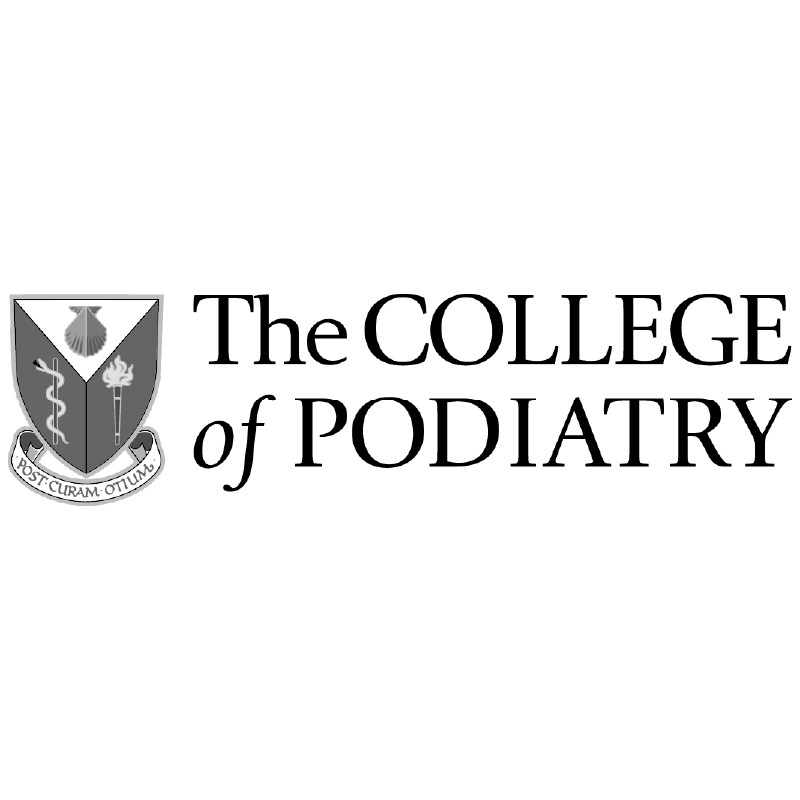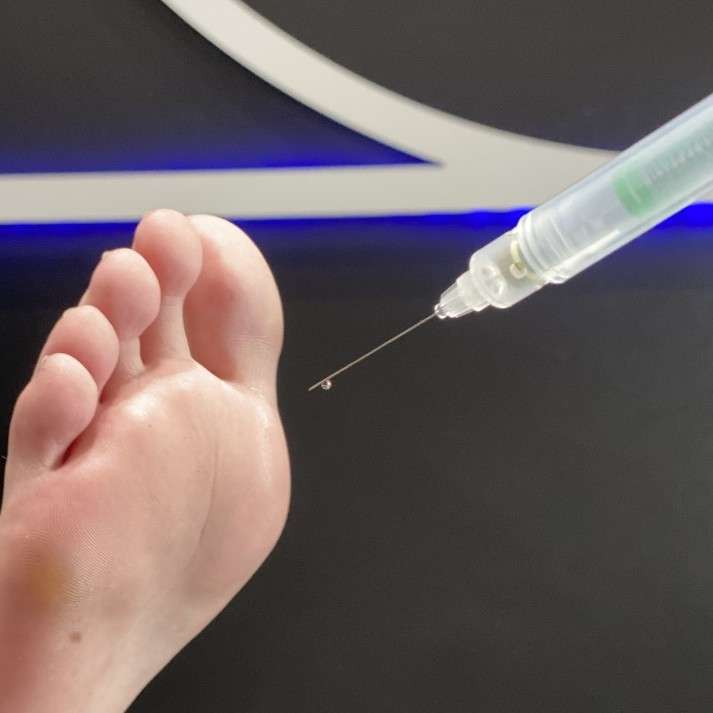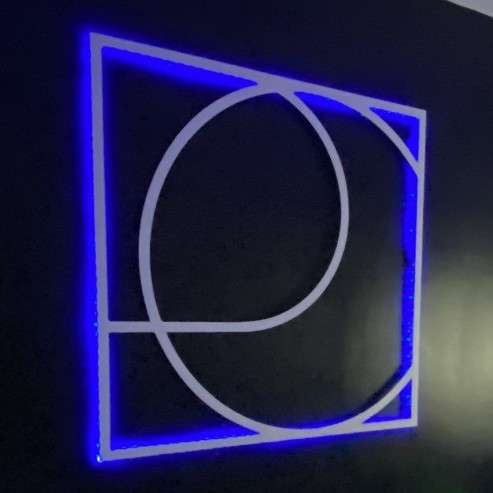Corn Treatment & Removal Glasgow
The qualified Podiatrists and Chiropodists at La Preme, Glasgow, treat corns and calluses to remove pain or discomfort.
Why treat corns and calluses?
Corns and calluses can be quite painful, depending on the amount of pressure on the soft tissue underneath. This pressure is caused by the corn or callus pushing down on the hardened tissue, which then transmits the pain to the softer tissue below.
It is crucial to identify the underlying cause to treat a corn or callus effectively. Once the source of friction or pressure is removed, the corn or callus can be safely removed.
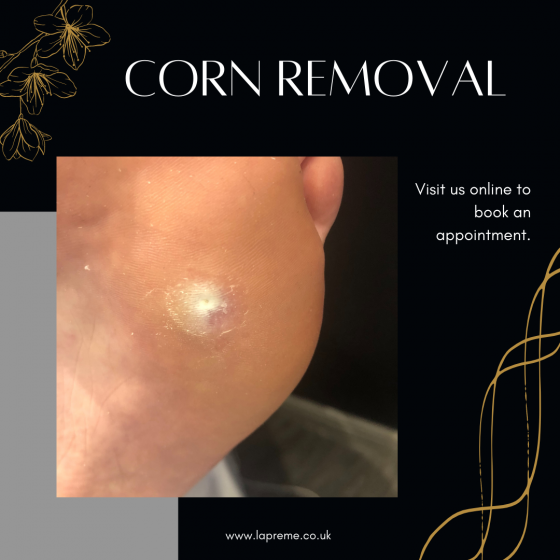
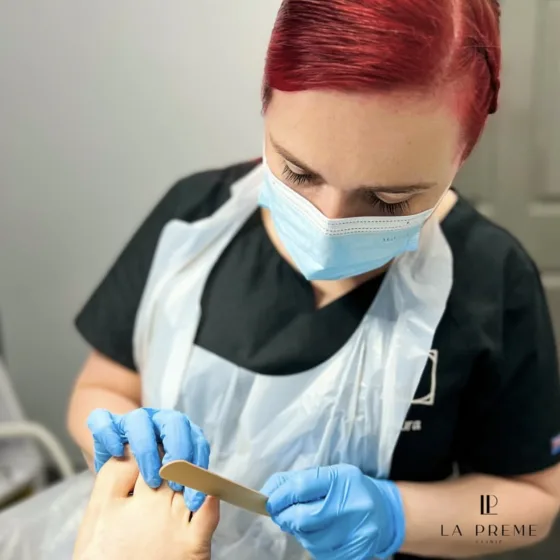
What causes corns and calluses?
Corns are primarily caused by pressure or rubbing. This is why it’s essential to identify the cause of your corn or callus before undertaking removal. Without identification and removal of the cause, the corn will likely return from further pressure or rubbing.
What is a corn, and what does it look like?
A corn is an area of hard, compacted skin built up through friction. It is not contagious and is commonly found on the ball of the foot, in the joints of the little toes and in-between toes. It will appear as a raised bump, often yellow in colour, with a hard, dry skin layer over its top. If left untreated, it may become red, swollen and infected.
Treatment of Corns & Calluses
Treatment of a Callus or Corn
A callus is a hard, thickened area of skin that forms when there is repeated friction or pressure on a particular spot. This can happen when you wear shoes that don’t fit well or when one of your toes rubs against another toe.
The dead skin that makes up a callus can be unsightly, especially when it is yellow in colour. A professional podiatrist or chiropodist can remove the callus in thin slices with a scalpel (do not try to undertake this yourself at home). By removing the dead skin in this way, no damage occurs to the healthy tissue underneath.
If you’re worried that a trip to the podiatrist will be painful, don’t worry – as long as they only work on healthy tissue. That’s why it’s important to go to an expert!
How many treatment sessions are needed to treat a callus or corn?
Most calluses only require a single treatment. Patients are typically seen again six to eight weeks later to confirm that the area is healing properly and that there are no signs of the callus returning. In some cases, however, a callus can be extensive and may require multiple treatments. Additionally, if the underlying cause of the callus has not been adequately treated, follow-up visits may show signs that the callus is starting to come back. In these cases, further treatment may be necessary.
Treating a Hard Corn
A hard corn and a callus are more or less the same, the main difference being a corn will have a hard and deep centre. You will follow similar steps towards treating a callus when treating a hard corn. Firstly you will remove the callus-like exterior of the corn, and then you will perform enucleation; this is when the hard centre is cut out of the corn.
When performing enucleation, it will often leave a hole or dimple in the tissue of the foot, which over time, the body will naturally fill with healthy tissue. In order to prevent further corn growth, we will temporarily fill the hole using a gel, polymer bled.
Similarly to the treatment of a callus, treating a corn is often limited to only one surgery at a time; however, this can be adapted if the corn is:
- Large and causing pain
- In a difficult to live with area
- Has been there for a long time
A podiatrist or chiropodist will decide whether further treatment is the best plan for you after a thorough evaluation.
Treating a Soft Corn
Similarly to when treating a hard corn, the first step in the treatment of a soft corn is to remove all of the surrounding dead skin using a scalpel. Being careful and using a scalpel, a podiatrist can separate the soft white tissue from the healthy tissue. This is made slightly easier because, as opposed to the skin being hard, it is macerated by the sweat and fluid from your feet.
When your feet sweat, moisture has a tendency to build up around your toes; when your toes then begin to rub against each other to cause the corns, you will often find release from the pain by using a toe separator.
A toe separator helps to hold the toes apart from one another, allowing the sweat to evaporate rather than build up and cause further problems in your feet.
As a part of the treatment for soft corns, a podiatrist or chiropodist will allow the patient to watch while we carefully clean and dry the skin of the feet, the toes and the web spaces in between. In addition, we will apply surgical spirit, which is a cleaning and sterilising alcohol. When applied to the skin and left to evaporate, it will dry the skin cells and sterilise the area in which it is applied.
Treating a Seed Corn
Seed corns are often associated with dry skin, often develop on the soles of your feet and often occur in groups. The medical term for this type of wart is heloma military. Unless pressure is directly applied to them, they will often not cause you any real pain or discomfort.
Treatment for these corns is often undertaken by first removing the group of little corns and then applying a soothing moisturiser to the area. This will also contain urea to aid in moisturising the area and sealing the water into the skin; it will also help to prevent further infection.
Treating a Subungual Corn
A subungual corn is a corn that is situated underneath the nail, making it very difficult to treat. It is complicated to treat as it is hard to reach the corn while the nail is still in place. To get to the corn and provide treatment, the nail will usually need to be removed.
In most cases, when treating this form of corn, a podiatrist will only strip back enough of the nail to gain access to the corn and provide treatment; however, in some cases, the entire nail will need to be removed. Once the nail has been removed or cut back, we can then use a scalpel to remove the corn. To prevent the corn from returning after removal we will use a treatment solution to destroy the rest of the corn tissue, not removed by the scalpel.
When performing treatment of a subungual corn, it is essential to review the patient regularly to ensure that the nail is growing back as it should with no signs of recurrence of the corn.
Treating a Neurovascular Corn
A neurovascular corn differs from other corns, which only have dead tissue in and surrounding them because it has blood vessels and nerves. Due to their makeup, a neurovascular corn can be significantly more challenging to treat. Performing treatment on a neurovascular corn is difficult as it will often be sensitive and painful to touch and will most likely bleed when removed. As such, podiatrists will usually perform this form of treatment using a local anaesthetic.
To be fully rid of them, a neurovascular corn will require extensive and precise excision and will often bleed. To help in treatment, we will use an ointment on the corn to help destroy the infected tissue that the scalpel has not removed. They will often recur and need further treatment.
